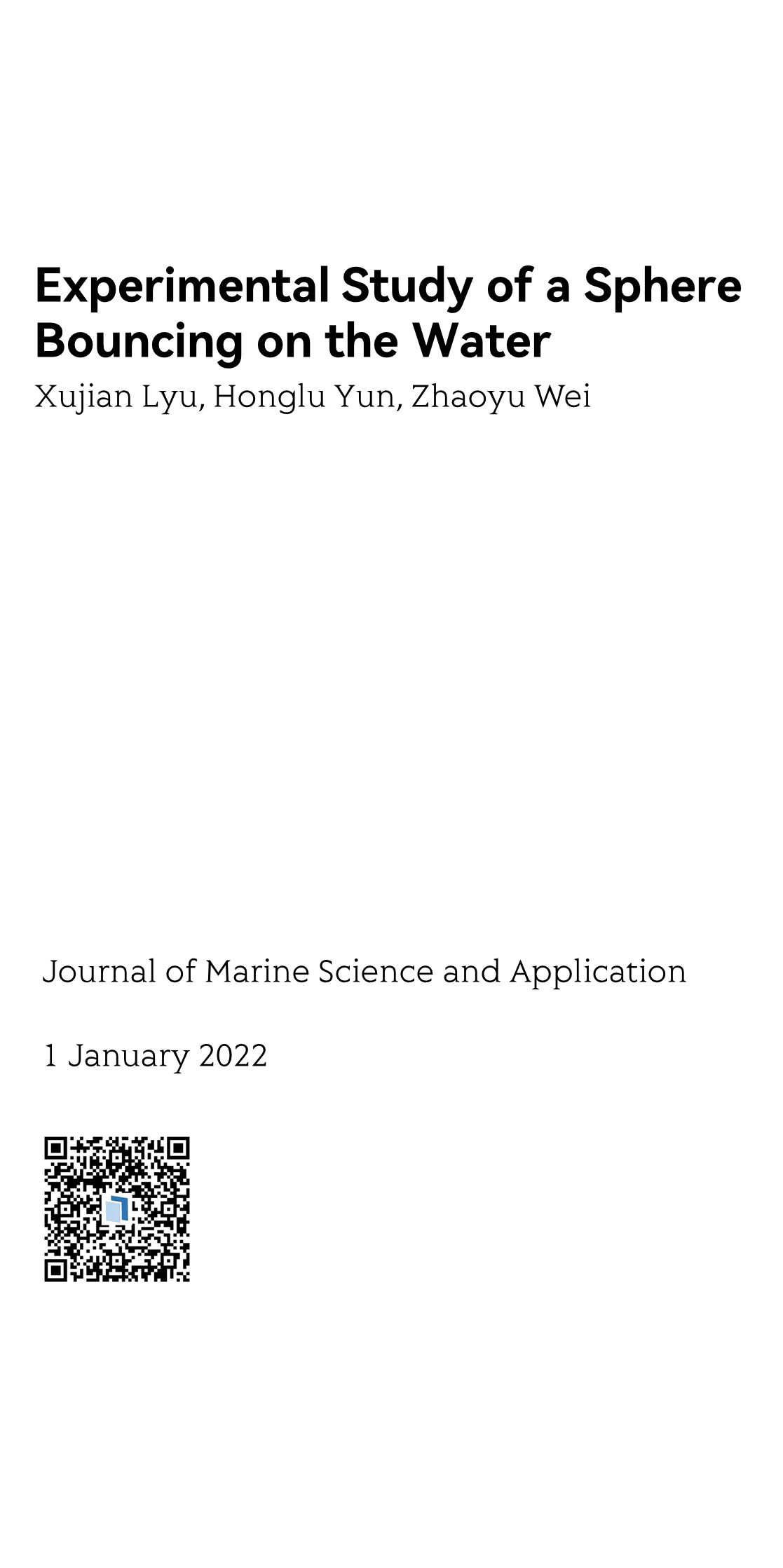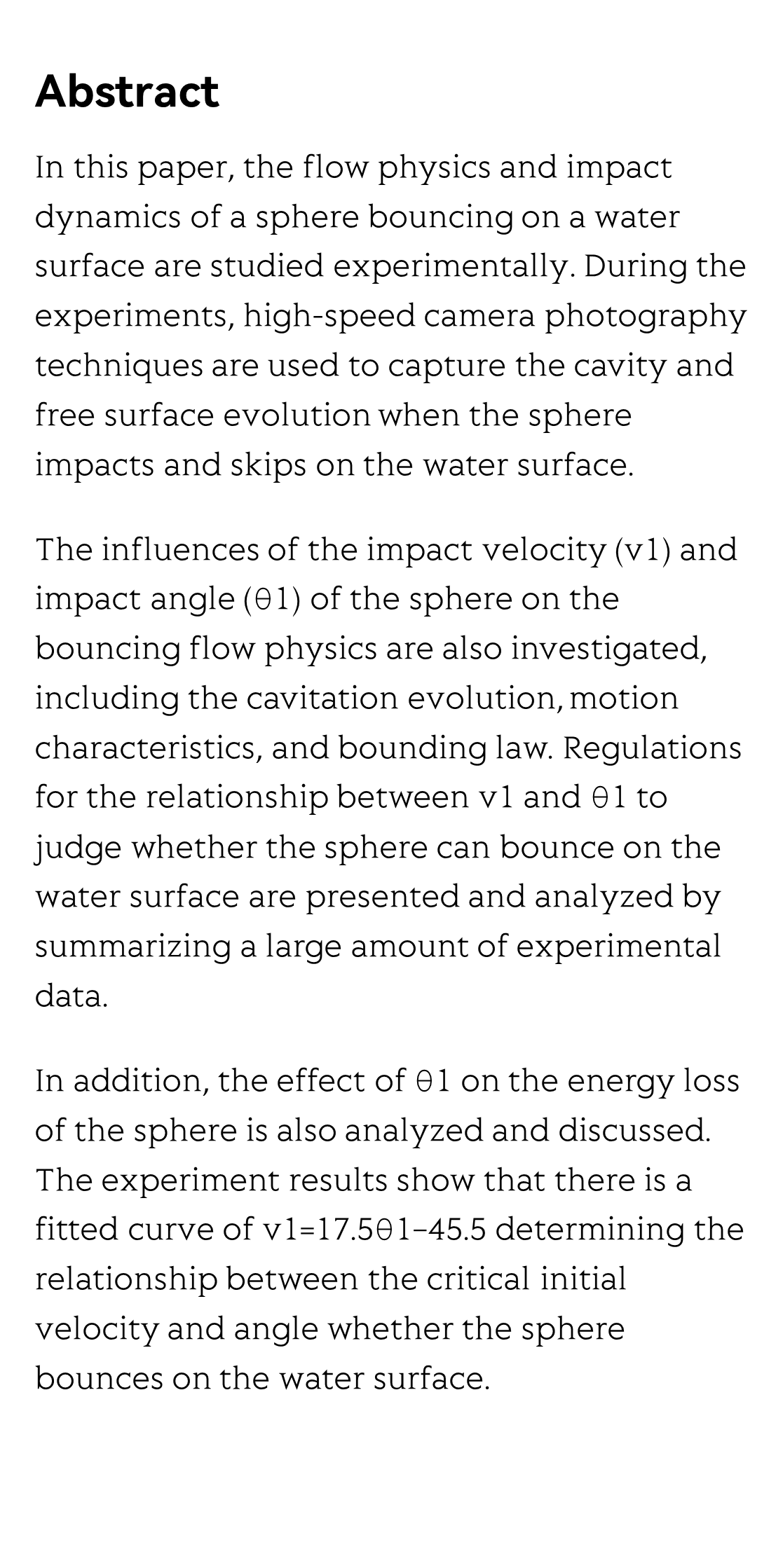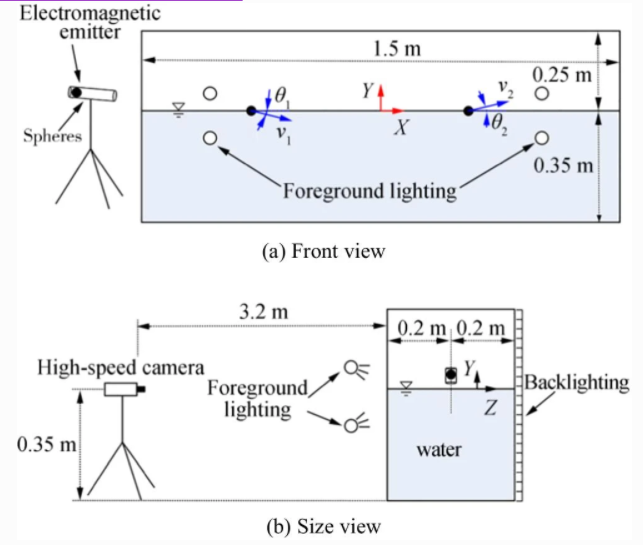(Peer-Reviewed) Experimental Study of a Sphere Bouncing on the Water
Xujian Lyu 吕续舰 ¹, Honglu Yun 运洪禄 ¹ ², Zhaoyu Wei 魏照宇 ²
¹ School of Energy and Power Engineering, Nanjing University of Science and Technology, Nanjing, 210094, China
中国 南京 南京理工大学能源与动力工程学院
² School of Oceanography, Shanghai Jiao Tong University, Shanghai, 200240, China
上海交通大学海洋学院
Abstract
In this paper, the flow physics and impact dynamics of a sphere bouncing on a water surface are studied experimentally. During the experiments, high-speed camera photography techniques are used to capture the cavity and free surface evolution when the sphere impacts and skips on the water surface.
The influences of the impact velocity (v1) and impact angle (θ1) of the sphere on the bouncing flow physics are also investigated, including the cavitation evolution, motion characteristics, and bounding law. Regulations for the relationship between v1 and θ1 to judge whether the sphere can bounce on the water surface are presented and analyzed by summarizing a large amount of experimental data.
In addition, the effect of θ1 on the energy loss of the sphere is also analyzed and discussed. The experiment results show that there is a fitted curve of v1=17.5θ1−45.5 determining the relationship between the critical initial velocity and angle whether the sphere bounces on the water surface.
Flicker minimization in power-saving displays enabled by measurement of difference in flexoelectric coefficients and displacement-current in positive dielectric anisotropy liquid crystals
Junho Jung, HaYoung Jung, GyuRi Choi, HanByeol Park, Sun-Mi Park, Ki-Sun Kwon, Heui-Seok Jin, Dong-Jin Lee, Hoon Jeong, JeongKi Park, Byeong Koo Kim, Seung Hee Lee, MinSu Kim
Opto-Electronic Advances
2025-09-25
Dual-frequency angular-multiplexed fringe projection profilometry with deep learning: breaking hardware limits for ultra-high-speed 3D imaging
Wenwu Chen, Yifan Liu, Shijie Feng, Wei Yin, Jiaming Qian, Yixuan Li, Hang Zhang, Maciej Trusiak, Malgorzata Kujawinska, Qian Chen, Chao Zuo
Opto-Electronic Advances
2025-09-25





